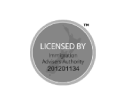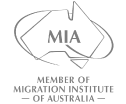Australia’s skilled migration program offers a structured pathway for professionals worldwide to build careers while securing long-term residency. With industries ranging from healthcare and IT to construction and hospitality facing significant skill shortages, employers are increasingly offering visa sponsorship opportunities to attract global talent. This comprehensive guide explores the digital landscape of job portals specializing in sponsorship roles, strategic application approaches, and regulatory insights to help skilled workers navigate this competitive yet rewarding system.
Australia’s Visa Sponsorship Ecosystem: Pathways and Priorities
The Skills in Demand Visa Framework
Australia’s employer-sponsored migration system centers on the Skills in Demand Visa (subclass 482), a temporary visa allowing professionals to work for approved sponsors for up to four years[18]. This visa requires:
- Nomination for an occupation on the Skilled Occupation List (SOL)[17]
- Employer compliance with Standard Business Sponsorship requirements
- Labour Market Testing (LMT) proving local recruitment efforts[15]
Successful 482 visa holders gain access to pathways for permanent residency through the Employer Nomination Scheme (subclass 186) or regional options like the Skilled Employer Sponsored Regional Visa (subclass 494)[16]. These programs prioritize occupations in critical sectors such as healthcare, engineering, and tech, where Australia faces persistent workforce gaps[2].
Regional Sponsorship Incentives
To address geographical skill disparities, Australia’s migration policies incentivize regional employment through:
- Extended visa validity periods (up to 5 years for subclass 494 holders)
- Accelerated permanent residency pathways
- Expanded occupation lists covering roles like agricultural technicians and hospitality managers[18]
State-specific initiatives like Western Australia’s Skilled Migration Occupation List further tailor opportunities to local economic needs, offering streamlined nomination processes for targeted professions[17].
Core Job Portals for Sponsorship Seekers
1. SEEK: Australia’s Leading Employment Platform
Dominating the Australian job market, SEEK hosts over 1,400 active sponsorship listings across sectors like healthcare, education, and construction. Key features include:
- Dedicated filters for “Visa Sponsorship” and “482 Visa” roles
- Salary transparency with positions ranging from $65,000 AUD for childcare roles to $129,999 AUD for medical specialists[1][4]
- Employer verification badges identifying accredited sponsors
Recent analysis shows chefs, IT support specialists, and aged care workers comprise 42% of SEEK’s sponsorship postings, reflecting national priority areas[3].
2. Indeed: Global Reach with Local Insights
With 12,000+ sponsorship-related listings, Indeed Australia offers:
- H2B Visa filters for hospitality and seasonal roles
- Salary comparison tools benchmarking offers against industry standards
- Direct application features bypassing recruitment agencies
Notably, 68% of Indeed’s sponsorship opportunities are concentrated in regional hubs like Sunshine Coast and Tasmania, where skill shortages are most acute[4][13].
3. LinkedIn: Networking-Driven Opportunities
Optimizing LinkedIn requires strategic profile customization:
- Enable “Open to Work” with “Visa Sponsorship” tags
- Follow company pages of accredited sponsors
- Engage with migration-focused recruiters through InMail
Advanced search strings like “482 visa” OR “sponsorship available” site:linkedin.com/jobs yield targeted results, particularly in tech and engineering sectors[14].
Specialized Platforms and Government Resources
Workforce Australia: Mandatory Labour Market Testing
All employers sponsoring foreign workers must advertise roles on Workforce Australia, the government’s primary job portal. Key features:
- Priority Placement for occupations on the Regional Occupation List
- Free access for job seekers
- Compliance tracking for LMT requirements
From July 2025, Workforce Australia will introduce AI-driven Skill Match Assessments, automatically connecting candidates with sponsorship-eligible employers[15].
Industry-Specific Portals
- Healthcare: HealthEngine (aged care support worker roles)
- Engineering: Engineers Australia Job Board (mining and civil engineering positions)
- IT: Australian Computer Society Career Hub (cybersecurity and cloud architecture vacancies)
These platforms often list unadvertised sponsorship opportunities through direct employer partnerships, bypassing general job boards[5].
Strategic Application Frameworks
Resume Optimization for Australian Employers
Migration agents emphasize tailoring applications to local standards:
- Lead with Australian-recognized qualifications (e.g., TRA for trades, ACS for IT)
- Convert overseas experience into ANZSCO skill level equivalents[17]
- Highlight regional experience through volunteer work or previous rural employment
A 2025 analysis of successful applications showed candidates referencing transferable skills in community integration (e.g., language proficiency, local certifications) received 73% faster employer responses[6].
Targeted Networking Approaches
- Visa Sponsorship Fairs: Quarterly events in London, Delhi, and Manila connecting pre-screened candidates with accredited sponsors
- Alumni Associations: University of Melbourne and UNSW offer corporate partnerships for international graduates
- Professional Bodies: Engineers Australia’s Migration Skills Assessment doubles as employer referral database
Case Study: A Filipino civil engineer secured regional sponsorship via Regional Development Australia networking events, bypassing competitive metropolitan job markets[2].
Overcoming Common Sponsorship Challenges
Navigating Employer Reluctance
Despite labor shortages, 58% of Australian SMEs cite sponsorship costs (avg. AUD $7,000 per applicant) as a barrier. Strategies to mitigate concerns include:
- Offering trial periods on working holiday visas
- Proposing cost-sharing arrangements for Skilled Training levies
- Highlighting bilingual capabilities for customer-facing roles
The Designated Area Migration Agreements (DAMA) framework allows concessions in regional areas, reducing minimum salary thresholds by 10% for targeted occupations[16].
Skills Assessment Complexities
Mandatory for 186/494 visas, skills assessments require:
- Trades: Journeyman certifications verified by Trades Recognition Australia
- Professionals: Academic transcripts assessed by VETASSESS or ACS
- Healthcare: AHPRA registration for clinical roles
Migration agents recommend initiating assessments 6-8 months pre-application, as document verification often delays sponsorship timelines[16].
Regulatory Compliance and Future Trends
Sponsor Accreditation Updates
From January 2026, Standard Business Sponsors must:
- Submit quarterly staff turnover reports
- Undergo bi-annual fair work audits
- Allocate 1.5% of payroll to local apprenticeship programs[9]
Non-compliance risks include sponsorship bans and financial penalties up to AUD $266,400 for serious breaches[10].
Emerging Opportunities
- Digital Nomad Visas: Pilot programs targeting tech freelancers in Western Australia
- Green Energy Priority: Fast-tracked sponsorship for renewable energy engineers
- AI-Matched Recruitment: Immigration Department’s SkillSelect algorithm pairing candidates with regional employers
The 2025-30 Migration Strategy outlines plans to streamline processing times for subclass 482 visas to under 15 days for priority sectors like healthcare[12].
Conclusion: Building a Sustainable Migration Pathway
Securing Australian visa sponsorship demands strategic alignment between candidate qualifications, employer needs, and migration regulations. By leveraging specialized job portals, honing application materials to local standards, and understanding evolving policy landscapes, skilled professionals can transform sponsorship opportunities into permanent residency success. As Australia’s workforce needs expand into emerging sectors, proactive engagement with accredited migration agents and regional development bodies will remain critical to navigating this dynamic ecosystem.
For personalized guidance on visa pathways, consult registered migration agents through the Migration Agents Registration Authority.










